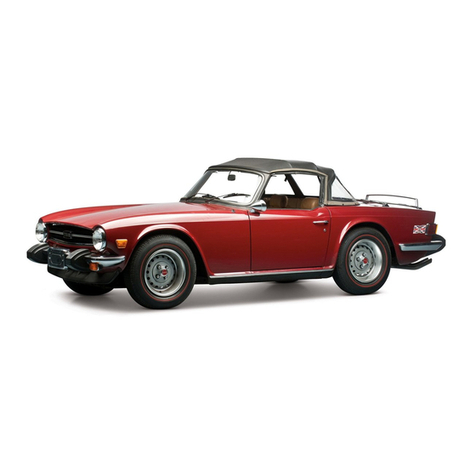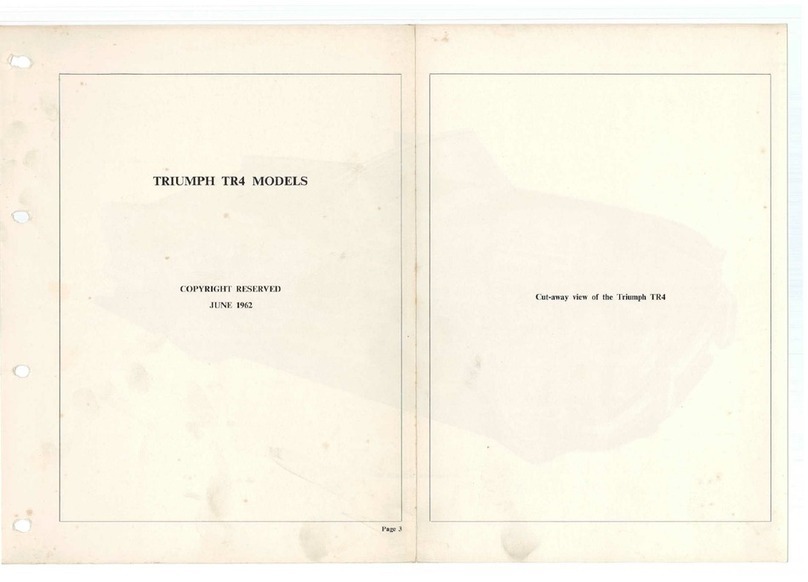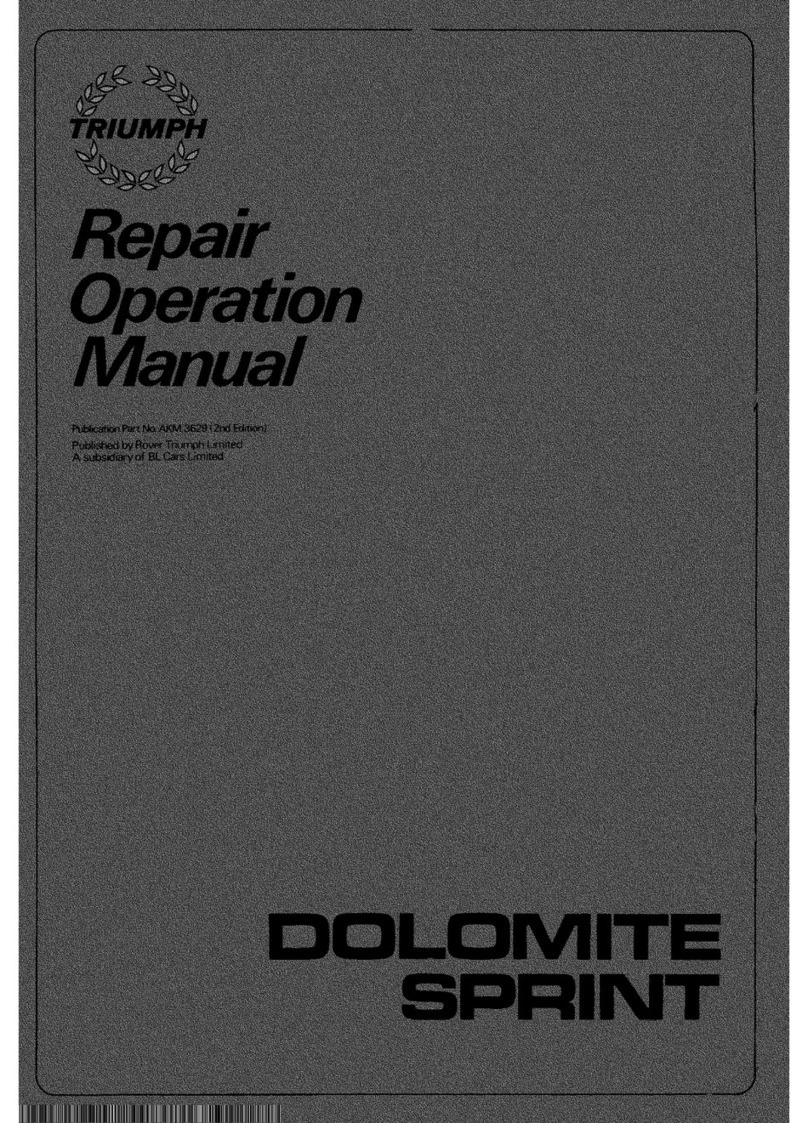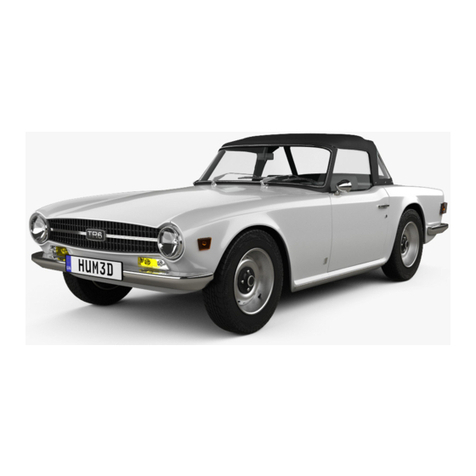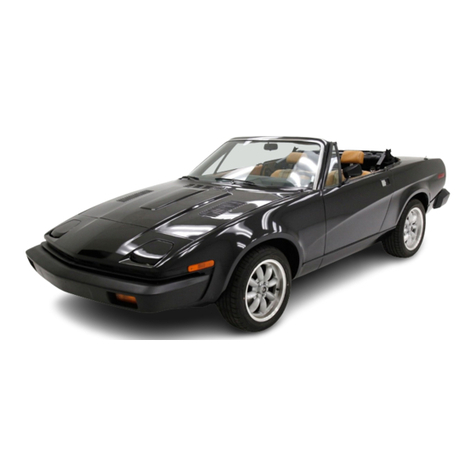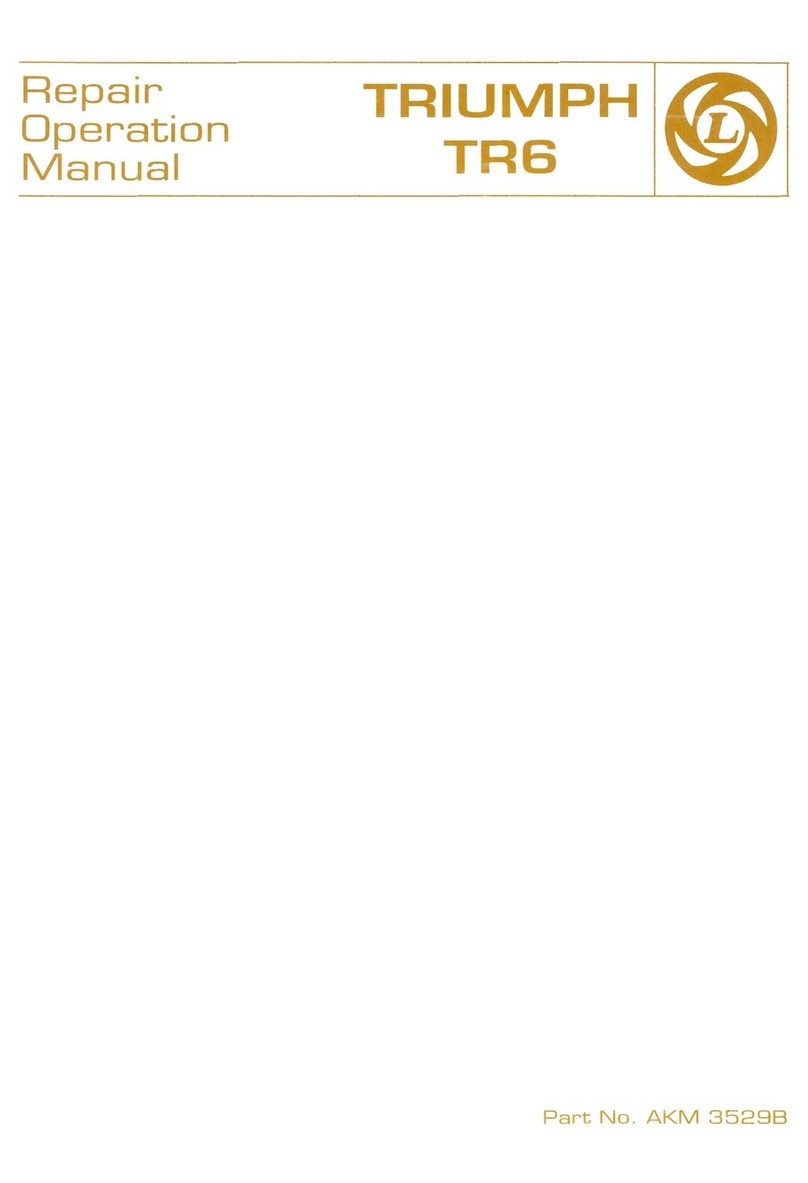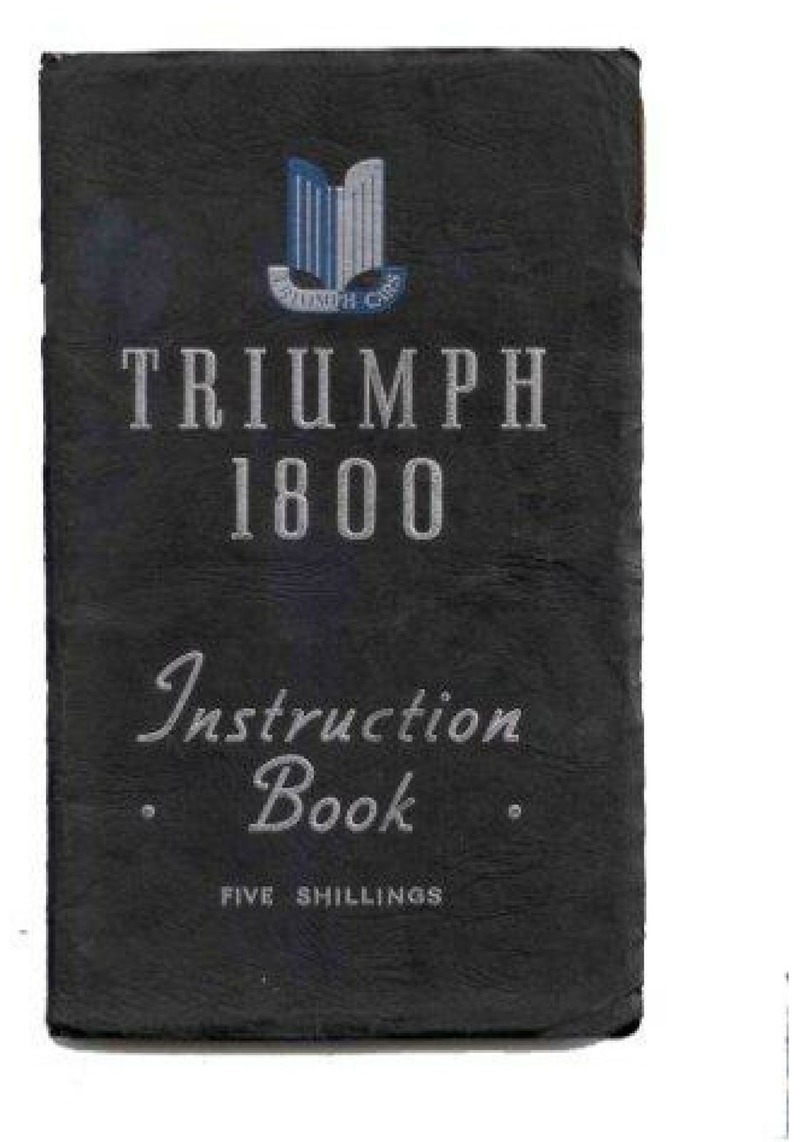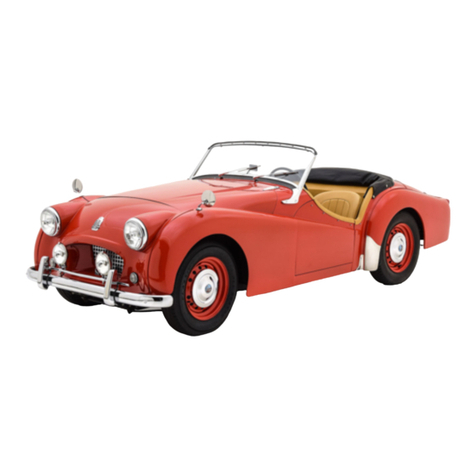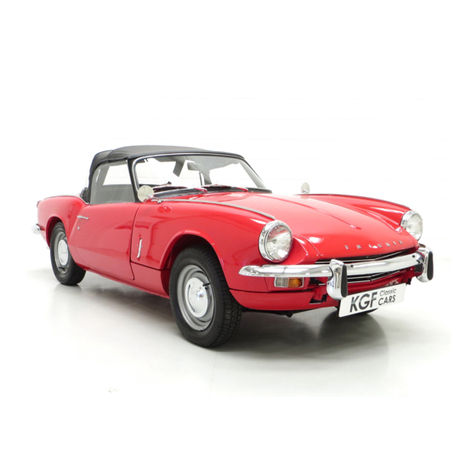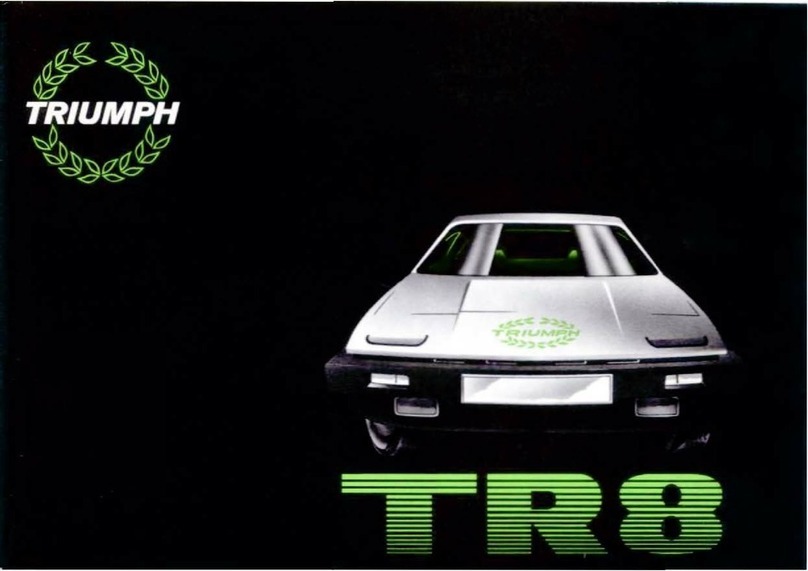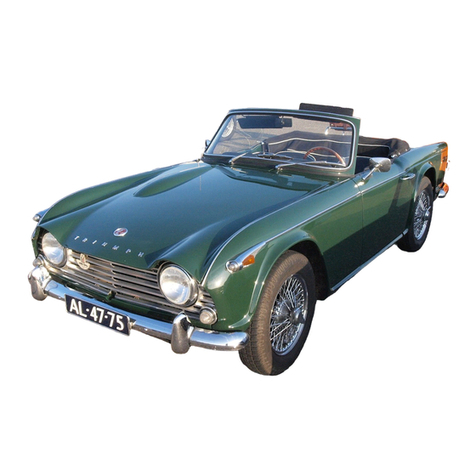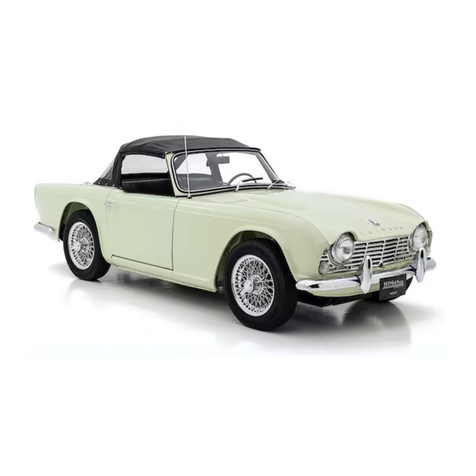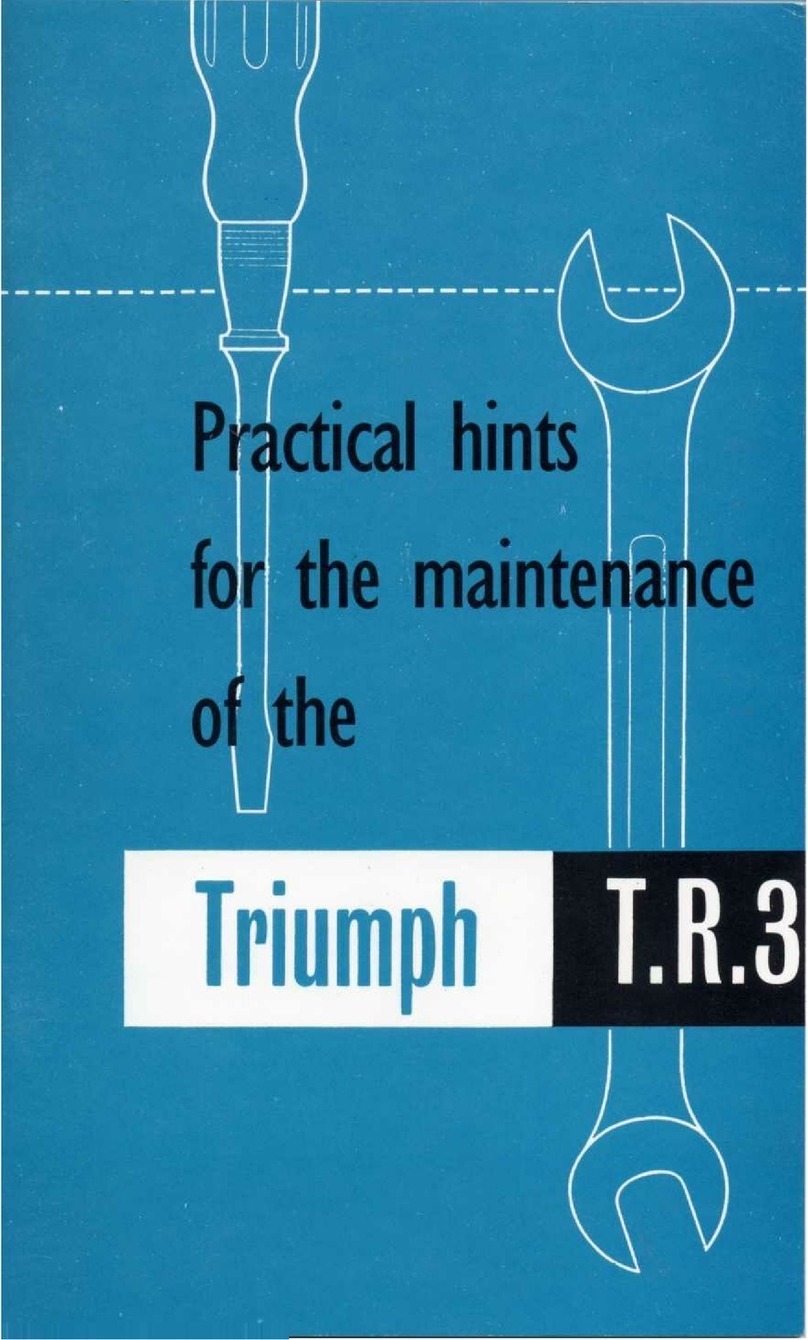EMISSION AND
EVAPORATIVE
LOSS
CONTROL
SYSTEMS
Fuel Injection System Components
Fuel
is
drawn
from
atank al the rear of the vehicle and
pressurised to approximately 2,5 kgf/cm2(36 Ibl/in2)
by
an
electric fuel
pump
located
benea~h
the car floor. The fuel
pump
will
only operate when the ignition and/or the starter
motor
circuits are energised, From this
pump
fuel passes
through fuel filters located in the engine
compartment
(Rover
3500)
or beneath the car floor
(TR
models} to apressure
regulator, the spring chamber of which is connected to the
engine intake manifold.
As
aresult, the difference between
the intake manifold pressure and the fuel pressure
is
held
constant, excess fuel being returned to the fuel tank via
an
anti-surge pot
Afuel rail links the pressure regulator
with
the fuel injectors,
one injector being fitted into each inlet manifold spur. The
injectors may
be
either ·open' or 'closed· and are solenoid
operated, The
injector
solenoids are energised through a
relay actuated
by
the ignition circuit and are pulsed to ·open·
by
the electronic control unit
(LeU.)
completing the circuit
to 'ground:' When
'open'the
injectors spray fuel into the Inlet
manifold to
be
drawn into the engine cylinders at the next
induction stroke of the working cycle.
Therefore there needs to
be
no fixed relationship between the
injector
timing
and the engine ignition or valve timing.
The injectors are programmed to ·open' in banks of four.
in
unison, twice per engine operating cycle (two revolutions).
On eight cylinder engines the
two
banks of four injectors
operate alternately, The
time
that the injectors are ·open'
governs the amount of fuel supplied to the engine and this
open' time
is
computed
by
the electronic control unit from
the input it receives from various sensors
Fig,4
TR7 Fuel injection system components
Key
to
Fig, 4
(1) Cold start injector
(2) Injectors
(3) Fuel rail
(4) Cold start injector -fuel feed pipe
(5) Fuel pressure regulator
(6) Return line to fuel tank
(7) Pipe to plenum chamber
(8) Thermo
time
switch 5
